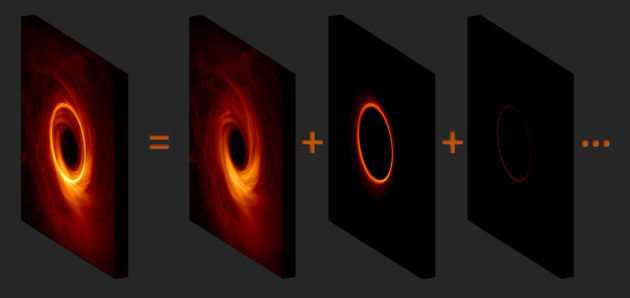We now are able to see M87 in higher resolution thanks to sophisticated code able to sift through the extensive dataset of the EHT resulting in a photon ring showing the actual outline of M87's super massive black hole. Interestingly, the ring's not a single entity but rather is comprised of many subrings as seen by the image below.
The M87 image scientists unveiled in 2019 was a landmark, but the researchers felt they could sharpen the image and glean new insights by working smarter, not harder. They applied new software techniques to reconstruct the original 2017 data in search of phenomena that theories and models predicted were lurking beneath the surface. The new, resulting image depicts the photon ring, comprised of a series of increasingly sharp sub-rings, which the team then stacked to get the full image.

Supermassive black holes effectively cast a shadow on the light from the hot, glowing gas that surrounds them (leftmost image). Around the shadow lies a bright photon ring. But the photon ring is not a single ring: it’s composed of a series of increasingly sharp subrings. Each subring n is produced by photons that traveled around the black hole n/2 times before reaching the observer (n’s of 0, 1, and 2 shown, left to right). These subrings stack to give the full image. Michael D. Johnson (CfA) and George Wong (UIUC)
End game.
The result was possible because the EHT is a "computational instrument at its heart," said Broderick, who holds the Delaney Family John Archibald Wheeler Chair at Perimeter. "It is as dependent on algorithms as it is upon steel. Cutting-edge algorithmic developments have allowed us to probe key features of the image while rendering the remainder in the EHT's native resolution."
Click here to read the paper.



No comments:
Post a Comment